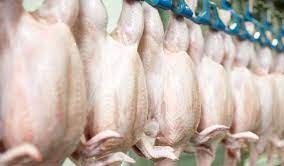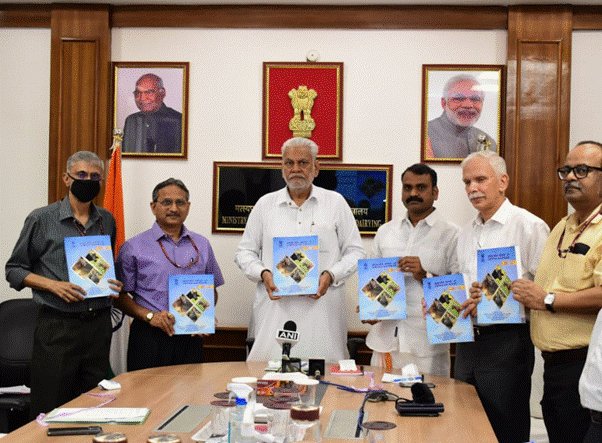Introduction :
Poultry meat stands at second place after pork in global meat production. It has an increasing share as a raw material in processed meat due to its widespread availability and popularity and its very competitive production cost. Major source of consumable animal protein comes from poultry.
In India, poultry production is constantly on a rise, but the processing industry has not maintained the same pace leading to overall moderate profitability. Only 20% of the total chicken meat and 6% of the total chicken eggs are processed. Among the dressed chicken, 70% are sold as dressed or chilled or frozen whole carcass, while the remaining 30% as cut-up parts and further processed products (Singh, 2012). Lack of processing is due to less preference for frozen chicken by the consumer, insufficient cold chain infrastructure facilities, lack of well-organized marketing system, non-availability of adequate technology, less domestic demand for value-added products, fluctuating export trade, high import duty, and strict sanitary and phytosanitary norms by importing countries, which together form its major constraints in India (Desikan and Megarajan, 2014).

Dr. Ankit Sharma1, Dr. Deepikesh Joshi2, and Dr. Kalicharan Nayal3
1PhD scholar (Poultry Science), 2PhD scholar (Livestock Production Management), 3M.V.Sc Scholar (Poultry Science)
Deptt. of Livestock Production Management, College of Veterinary and Animal Sciences, GBPUAT, Pantnagar, Uttarakhand (INDIA)
Corresponding Author E-mail ID: deepikeshj@gmail.com
The poultry processing industry in India is expected to expand at a compound annual growth rate (CAGR) of ~12% between 2018 and 2023, to reach a value of INR 107.6 Bn in 2023. The market is operated by well-established players that include Venky’s India Limited, Suguna Foods Limited, Godrej Tyson Foods Limited, and Skylark Foods Private Limited. Presently, live broiler birds are being transported between the Indian states, more often under unhygienic conditions. Further, many birds get killed because of the lack of dry processing and storage facilities during the transportation process. Processing and marketing of poultry range from live bird markets or a very primitive on-site slaughter and sale to highly sophisticated, fully automated, and International Standards Organization (ISO) certified facilities and ready-to-eat convenience products in many parts of the world. Lack or inadequacy of refrigeration is probably the single largest obstacle to the marketing of many perishable foods, including meat and poultry.
Handling before slaughter :
When the birds have reached harvest time, they are generally taken off feed and water. This allows their digestive tracts to empty and reduces the chance of contamination during processing. Feed is removed from broilers approximately 8-12 hours before slaughter.
The poultry house is cleared of the equipment prior to the arrival of the catching crew. The birds are loaded into multilevel coops. These coops are loaded onto trucks and transported to the processing plant. Birds are weighed as a group on arrival and held in a holding shed to provide some minimal protection from the environment prior to unloading. The loading, unloading as well as transportation of poultry birds should preferably be done during colder hours of the day. Upon arrival, the antemortem examination of poultry birds is done to pass judgment about the suitability of slaughtering them for further processing.
Antemortem :
Bird showing any evidence of a disease or any other abnormal condition including large flesh bruises, severe discoloration, severe injuries, and emaciation may render the bird or any part for it unfit for human food. Symptoms to be watched for are definite discoloration of combs and wattles; lameness or droopiness; greenish, yellowish, brownish or bloody diarrhea, gaping, sneezing or rattling in the throat, nasal discharges, swelling of sinuses, abnormal growth, emaciation, lack of vigor and vitality.
Processing Steps:
- Shackling: Poultry meat processing is initiated by hanging the birds to a processing line. Birds are transferred from coops or transport cages to a dark room where they are hung upside down from shackles attached to an automated line.
- Stunning: A low voltage electric stunning of 50 volt for 1 minute has been satisfactory. It delivers a current through a water bath to make the bird unconscious. An effective stun will cause the bird to arch the neck, hold the wings tightly to the body, and sometimes have body tremors. The current should be compliant with minimum recommended current per bird.
Controlled Atmosphere Stunning: Gas stunning is another form of stunning. Birds are immersed in an approved gas or mixture of gases (i.e. CO2) in order to displace oxygen and render the bird unconscious.
- Picking: It refers to feather removal. The picker removes the feathers on the carcass. The picker is an automated machine that contains rubber finger-like projections that rotate in a circular motion to remove feathers without damaging the carcass. There is removal of feet, head, neck and oil glands. Feet are removed at the knee joints. The head is cut and removed. The neck is cut by machine and esophagus is exposed.
- Evisceration: It refers to the removal of internal organs. The inedible viscera consist of the spleen, esophagus, lungs, intestines and reproductive organs. The intestines are federally inspected for signs of disease or other problems. Identified disease or any other problems results in the condemnation of the carcass. The edible viscera or giblets consists of the heart, liver, and gizzard. The giblets are packaged in the carcass or sold separately.
- Washing of carcass: The carcasses are cleaned for microbial and visible concerns. When processing chicken, microbial bacteria such as E. Coli and Salmonella are analyzed.
Chilling: The carcass temperature must be decreased to prevent microbial growth. The USDA specifies the amount of chilling for specific bird sizes:
4 lb broiler: 40℉ within 4 hours.
4-8 lb broiler: 40 ℉ within 6 hours.
>8 lb broiler: 40 ℉ within 8 hours.
Submerging the carcass in a chilled water bath is the most common method of carcass chilling. The carcass can also be chilled by air chilling. Air chilling occurs by passing cold air over the carcass. This is a more expensive process but some consumers are willing to pay more for air chilling.
- Cut-up and deboning: On average, 75-80% of the live animal weight is retained in the carcass. This amount of live weight retained in the carcass is known as the dressing percentage or yield. The carcass can be sold whole or individual components of carcass can be cut-up for individual sale. Cut-up often includes removal of the breast, thigh, drumsticks and wings. Deboning refers to the removal of bone from the cut-up meat. Breasts and thighs are commonly deboned.
- Further processing: The whole carcass or cut-up and deboned pieces may be further processed for value addition. Further processing may include forming, curing, smoking and cooking of products. Forming product requires a change in particle size and often includes the addition of nutrients to add flavor. Forming product also requires the use of a mold to obtain desired shape. Formed products include hot dogs, chicken nuggets, or sausages. Curing involves the addition of preservatives, often nitrates to the meat to improve flavor and product’s shelf-life. Smoking also acts as a preservative while providing additional flavor to the product. Some product may prepared in a form that is edible without additional preparation and is known as “ready-to-eat”.
- Storage: Poultry meat should be refrigerated at 30℉. Keeping of the poultry below 40℉ reduces the risk of microbial growth. Refrigeration and freezing does not kill all microbes.
Thus, it is necessary that every step of the processing of poultry meat is monitored with utmost efficiency to get a processed meat product of high quality. The knowledge about various aspects of these processing steps would eventually help processing industries to know the anomalies in their processes which would help to increase their profits in the future.















